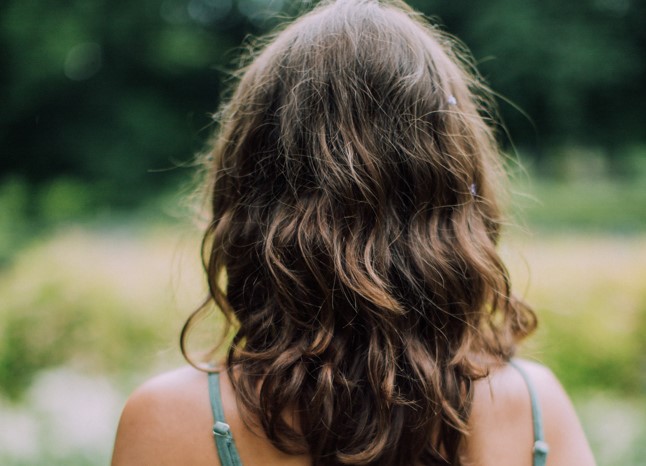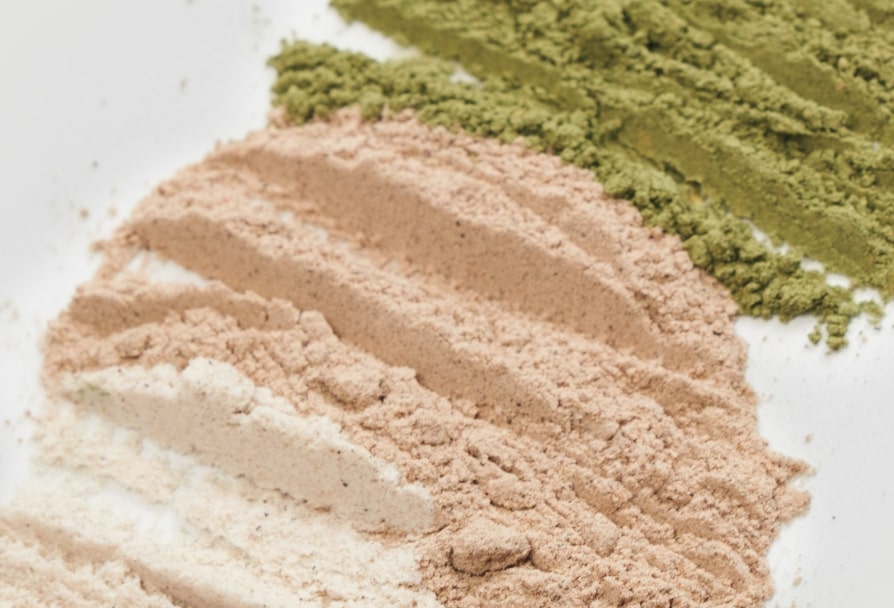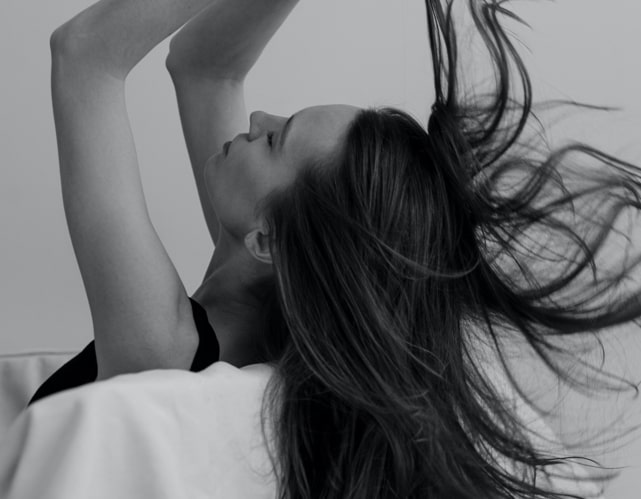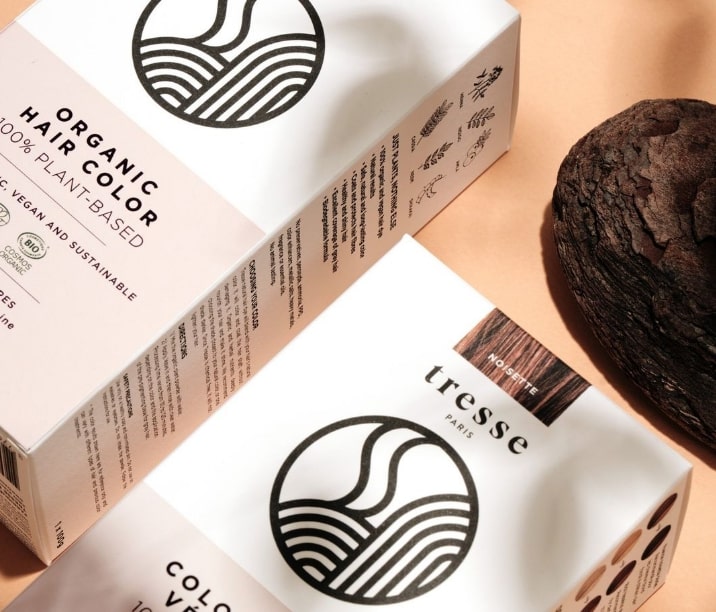Natural hair coloring : all our advice for choosing and applying it
Plant-based hair coloring is positioned as THE new natural alternative to traditional color. at a time when more and more people are turning to solutions that are more respectful of the environment and health in their hair routine, these colorings based on plant powders seem to be the secret for radiant and healthy hair. shape. In this article, we tell you more about vegetable color and its benefits. Also discover all our useful tips for perfect application at home !

Plant extracts, coloring, henna: What is plant color ?
Natural and organic coloring treatments are formulated from plant powders and vegetable dyes, such as henna, which creates warm, rich and luminous shades, indigo, cassia or even walnut husk. This coloring method is an alternative to conventional color that avoids potentially harsh chemical ingredients for the hair. The natural pigments and plant extracts used to create the colors blend with the hair fiber while preserving its health. You read correctly ! Plant-based colors respect the balance of the hair while offering a range of deep shades, long-lasting hold, and unique results!
100% natural or conventional organic dye : Which is less harmful to hair ?
Do you really care about the health of your hair and want to know if plant-based coloring is the best option for you? We take stock! Vegetable coloring is, unsurprisingly, a much better option if the main thing for you is to have healthy, glowing hair. Indeed, chemical colorings use potentially aggressive and unhealthy substances such as endocrine disruptors, ammonia and peroxides which allow them to penetrate the hair scales. These active ingredients destroy melanin (the natural color of hair) and simultaneously recolor the hair fiber using synthetic pigments. Then, a product with an acidic pH closes the hair scales to fix the color. The hair is therefore irreversibly and aggressively denatured. The result after excessive use of this type of color? Dry and weakened hair. On the contrary, natural dyes are made from environmentally and hair fiber friendly ingredients to color hair without stressing it. The pigments do not penetrate the hair scales, they attach to the surface and coat the hair fiber while respecting its balance. Result ? Vegetable dyes keep hair supple, beautiful and shiny, they can also stimulate its vitality by making it stronger, softer, and even add volume! It is therefore the ideal combo for healthy hair and a great look.

What is the best vegetable color without ammonia to cover white hair ?
We have THE ideal solution to camouflage white hair while ensuring the health of the hair: ammonia-free plant-based coloring offered by the French brand TRESSE. This innovative brand uses carefully selected raw materials to obtain intense colors thanks to a remarkably fine particle size. TRESSE vegetable coloring, unlike conventional colorings, does not disrupt the natural structure of the hair, on the contrary, it protects it! Using a biodegradable and non-toxic formula, it subtly enhances the natural color of the hair while concealing white and gray hair. your hair is denser and more radiant, even during pregnancy thanks to the natural virtues of plant powders !
I want to do a natural color to become blonde ! It's possible ?
Natural and organic coloring offers a gentle method to obtain pretty golden highlights or beautiful blonde shades, but for this, the base of the hair must already be light! This coloring method uses natural pigments that match the nature of the hair, so results may vary depending on the initial shade of the hair. But be careful, the natural color does not bleach the fiber, so you will not be able to go from brunette... to blonde !
Bleaching involves removing natural pigments from hair, whereas plant-based coloring adds pigments rather than removing them. As a result, natural dyes will only help you create pretty highlights or shades, but they do not achieve a high level of lightening, necessary to go from dark hair to blonde. If you really want to change your mind with a color.

How to do your vegetable coloring at home for a result like at the hairdresser ?
We give you the steps to follow for a successful home vegetable coloring:
1) The choice of vegetable coloring : This is the most important step in the whole process, choosing the right coloring. We opt for a high-quality plant-based color with a short formula based on plant extracts and deep pigments that will match your current color and your preferences.
2) The preparation : To achieve its vegetable coloring in an optimal way, it is better to be meticulous during the preparation. No need to be a chemist! However, the instructions provided should be carefully followed. We mix the hot water (the temperature is important because it is the heat which will activate the pigments) gradually with the powder, so as to obtain a creamy paste, neither too liquid nor too dry, in order to facilitate best app! Warning: you should not use metal accessories, choose glass or wooden bowls and utensils, as metal can interact with the pigments
3) Shampoo : The hair must be free of any product or residue, it is even advisable to do a hair scrub before coloring to be sure that the hair is clean and clarified.
4) Application : First, place a towel on your shoulders and use gloves to avoid staining your clothes and hands. Then, apply the mixture to wet, clean hair, section by section, using a brush, starting with the roots. Then, distribute the color throughout the hair, and mix well so that the result is homogeneous. Finally, we cover the hair with a charlotte or film paper.
5) Waiting time : Be patient and respect the time indicated on the instructions to obtain the best possible result! Vegetable coloring requires more break time than classic coloring, in general, 1 hour for hair that needs a single step and 2.5 hours for white hair with Braid coloring.
6) Rinse : Rinse your hair with lukewarm water until the water runs clear. We make sure that all the excess product is removed! Caution: You should not shampoo for 48 hours following vegetable coloring to give the pigments time to set. The final result of the dyeing can be seen after 24 to 48 hours.
7) The care : It is recommended to make a natural care for the hairafter the color, especially adapted to the colored hair. This step will maintain the shine and suppleness of the hair.
Discover our explanatory video on the application of natural color right here >

Red, black, brown, chestnut dye : The Tresse brand has everything you need !
Tresse Paris is a committed French brand that has devoted years to research and development to give birth to a plant-based hair color that is both healthy and effective with a beautiful professional result and an impeccable formula. Its formulas based on plant powders and plant pigments are vegan, biodegradable and created in a short circuit. Plant active ingredients, activated by water, are real allies for improving color while preserving hair vitality. They sheathe, strengthen and create a protective envelope, which gives an authentic and shiny result! In addition to having multiple benefits for the hair, this natural coloring offers a wide range of hair shades. The available shades such as luminous blonde, natural copper, hazelnut, deep chestnut, espresso or intense black, blend harmoniously with the natural color of the hair for a subtle and radiant result. The plant-based coloring is also suitable for expectant mothers, breastfeeding women and sensitive scalps prone to irritation and itching, as it is made without essential oils. Its big plus? This coloring is sold in a kit which contains the pre-pigmenting base, the color, as well as accessories such as gloves and the cap developed from natural and biodegradable materials to push its commitment down to the small details.
They tested it and they love it :
"Emeline : Best vegetable coloring I have tested! Covers white hair well, the Espresso shade is very pretty (not too red as is often the case for henna colorings). We feel that the quality is superior, with other brands I had to leave it on all night for it to cover really well. I also appreciate the fact that the base is included in the kit. Even if it is longer and more restrictive than a chemical coloring the result clearly worth it, the hair is really protected and strengthened.
"Julie : This brand has reconciled me with vegetable colorings. It lasts well but you have to respect the exposure time. It covers my white hair well: I have at least 30% of it. They look coppery red. It makes pretty reflections in the sun. It's very natural. The deep brown color is perfect for my dark brown hair. Now I do my colors every month or month and a half. It's certainly a long time but at least we're at home and we can go about our business! Time is made profitable."

In summary, vegetable coloring is a method that revolutionizes the world of hairdressing to obtain supple and healthy hair. It allows you to take full advantage of the benefits of plant pigments while obtaining results comparable to those of classic coloring if you make the right choice of product and follow the right application techniques. Vegetable coloring allows you to personalize your style while taking care of your hair in an ecological and responsible way.
Article you might also like to read :
Our tips for restoring shine to dull hair
We help you make a perfect natural hair transition!
Organic shampoowill save your hair
Discover the 10 best rated organic shampoosin our eshop
How to have beautiful curly hair
Can dandruff be caused by stress?
When to worry about hair loss?
Is it normal to lose hair after pregnancy?
Natural products to use when you have curly to frizzy hair
Discover the ideal natural products for fine hair
Why is my hair dry in the summer?
Comments



